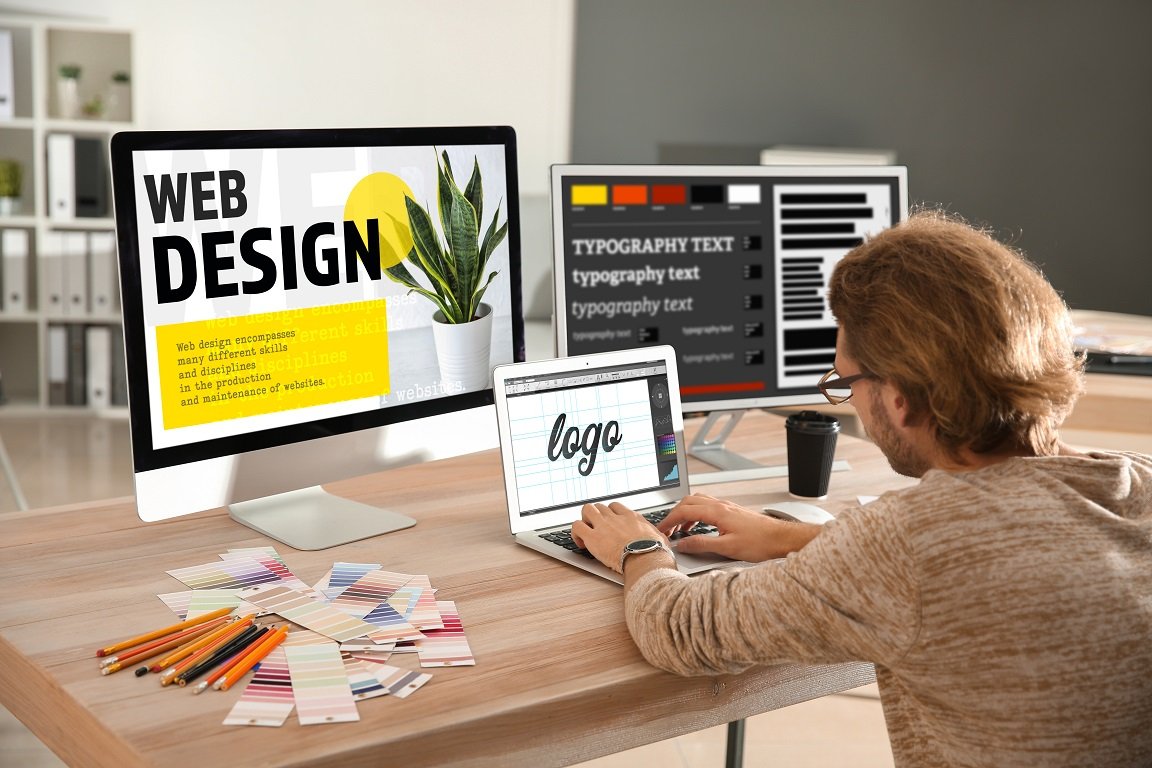7 Tips to Achieve The Right Balance Between Creativity and Usability in Web Design

In the ever-evolving world of web design, finding the right balance between creativity and usability is crucial. While it’s important to create visually appealing websites that capture the attention of users, it’s equally essential to ensure that the website is user-friendly and easy to navigate. Achieving this delicate balance can greatly enhance the overall user experience and lead to higher engagement and conversion rates. In this article, we will explore some valuable tips that can help web designers strike the perfect equilibrium between creativity and usability.
Web design plays a vital role in capturing the attention of visitors and keeping them engaged on a website. Striking the right balance between creativity and usability is essential to ensure that users have a positive experience and can easily find the information they are looking for.
Read more: What Makes a Great Modern Website Design?
Understanding the Importance of Creativity and Usability
Creativity in web design allows for unique and visually stunning websites that leave a lasting impression. Usability, on the other hand, focuses on functionality and ease of use. Both aspects are equally important, and neglecting one over the other can lead to a subpar user experience.
Conducting User Research
Before starting any web design project, it’s crucial to conduct thorough user research. This involves understanding the target audience, their preferences, and their goals when visiting the website. Gathering insights through surveys, interviews, and analytics data can help in making informed design decisions.
Creating Intuitive User Interfaces
An intuitive user interface (UI) is key to achieving usability. Designers should focus on creating clear navigation menus, using consistent icons and labels, and ensuring that interactive elements are easy to understand and use.
Prioritizing Content Organization
Effective content organization is vital for both usability and creativity. Information should be structured logically, with clear headings and subheadings. This helps users quickly locate the content they are interested in and improves the overall user experience.
Maintaining Consistency in Design Elements
Consistency in design elements such as color schemes, typography, and button styles helps create a cohesive and visually appealing website. Consistency also aids in usability as users become familiar with the interface and can navigate through different pages effortlessly.
Using Color Theory and Typography
Colors and typography greatly influence the overall look and feel of a website. Choosing a color palette that aligns with the brand identity and evokes the desired emotions can enhance the visual appeal. Similarly, selecting appropriate fonts that are legible and easy to read improves the usability of the website.
Implementing Responsive Design

In today’s mobile-driven world, responsive design is essential. Websites should be optimized for various screen sizes and devices, ensuring a seamless user experience regardless of the device being used. This approach enhances usability and accessibility while allowing for creative and flexible design solutions.
Optimizing Website Speed
A slow-loading website can deter users and negatively impact usability. Optimizing images, minifying code, and leveraging caching techniques are some ways to improve website speed. By ensuring fast loading times, designers can provide a better user experience and reduce bounce rates.
Conducting User Testing and Gathering Feedback
User testing is a valuable process that helps identify usability issues and areas for improvement. By observing users interact with the website and collecting feedback, designers can refine their designs and make necessary adjustments to achieve better usability and creativity.
Keeping Up with the Latest Trends
Staying informed about the latest web design trends is important for maintaining a balance between creativity and usability. While it’s essential to stay current, it’s equally crucial to evaluate trends and incorporate them in a way that aligns with the brand and the target audience.
Balancing Creativity and Usability in E-commerce Websites
E-commerce websites require a special focus on balancing creativity and usability. While the design should be visually appealing, it should also provide a seamless shopping experience. Clear product categorization, easy navigation, and a streamlined checkout process are essential elements to consider.
Integrating Social Media Features
Incorporating social media features can enhance both creativity and usability. Integrating social sharing buttons, embedding social media feeds, and enabling social logins can increase user engagement and provide opportunities for creativity in design.
Enhancing Accessibility
Designing for accessibility is essential to ensure that all users, including those with disabilities, can access and navigate the website. Providing alternative text for images, implementing keyboard navigation, and using proper heading structure are some accessibility considerations that can be integrated without compromising creativity.
Read more: Mastering SEO: Key Techniques for Website Optimization
Conclusion
Achieving the right balance between creativity and usability in web design is a delicate yet essential endeavor. By prioritizing usability while implementing creative design choices, you can create a website that captivates users while delivering an intuitive and seamless user experience. Remember to simplify navigation, optimize page load speed, prioritize content legibility, implement responsive design, maintain consistency, use visual hierarchy, incorporate intuitive CTAs, ensure mobile-friendliness, test, and iterate, and seek user feedback. By following these tips, you’ll be well on your way to achieving a harmonious blend of creativity and usability in your web design.
FAQs
How can I find the right balance between creativity and usability in web design?
Finding the right balance requires understanding the target audience, conducting user research, and prioritizing usability while incorporating creative design elements.
Are there any tools available to test website usability?
Yes, there are various tools available, such as user testing platforms, heatmaps, and analytics software, that can help assess website usability.
What role does color play in achieving the right balance?
Color plays a crucial role in creating an emotional connection and enhancing visual appeal. Choosing a color palette that aligns with the brand and evokes the desired emotions can contribute to the overall balance between creativity and usability.
How often should I update my website’s design to stay current with the trends?
Regular updates are necessary to keep the website design fresh and aligned with current trends. However, it’s important to evaluate trends and implement them thoughtfully, ensuring they contribute to both creativity and usability.
What are the key elements to focus on for e-commerce websites?
For e-commerce websites, prioritizing product categorization, navigation, and the checkout process is crucial. Balancing creative product displays with a user-friendly shopping experience is vital.











